Summer activity around the feeding station is like watching an animated movie. Adults fly down with their young for lessons in getting food and water, flitting from one antic juvenile to the next in a rapid-fire exhibition of maneuvers. Now you can experience the frenzy with your own bird. Using the diagrams and instructions below, turn a simple piece of paper into a complex pattern of folds for flapping.
Tag: flying
Bluebird Troubleshooting Chart
Having trouble with your nestling bluebirds? This troubleshooting chart may be the tool you need.
Winter Birds in Missouri
By: Mary Douglas, Ph.D.

Missouri is dead center in one of the largest migratory pathways on the North American continent. The Missouri and Mississippi rivers are highways for millions of birds moving south from Canada and the northern states. Bird populations shift with the seasons as they have for millennia. In winter Missouri birders miss our backyard friends the hummingbirds, orioles, wrens, swallows, and other insectivores. Their absence makes way for the incoming seed eating Juncos, Siskins, and Finches. The changes come and go every year giving birders something new to see every day.
The significance of migration is most pronounced at our Missouri State Wildlife areas. Places such as Squaw Creek and Swan Lake in NW Missouri attract millions of migrating and overwintering waterfowl and raptors. Canvasback, Mallard, and Merganser ducks move in with Canadian Geese and Snow Geese in large flocks. Seeing these birds en masse is truly breathtaking.
Raptors follow the migrating waterfowl and overwinter here as well. Missouri has the largest population of overwintering Bald Eagles in the country. The Missouri Department of Conservation (MDC) has Eagle Days when the public can go to specific watch sites to enjoy the show with up to 30 eagles roosting in a single tree. These opportunities are memorable opportunities for photography and hot chocolate. Wrap up if you go, it is always bitter cold temperatures and dangerous wind chills blow in over the wetlands. It is worth the effort! You can find details on dates and locations at https://nature.mdc.mo.gov/eagle-days-5.
Local sighting trends follow the food availability. As the agricultural harvest season comes and goes, the birds move to other sources. Wild foods such as sunflowers, berries, thistle seed, and mast fall such as pecans, walnuts, hickory, and persimmons feed our forest friends through the dormant cold months. We are able to lure birds into our home environments with readily available seed, suet, and fresh water. Birds are particularly susceptible to dehydration in the dry cold winter months making a water source critical to survival. Combining food with water sources keeps our beauties in viewing proximity year round. A good regional bird identification book is handy for referencing birds you do not recognize. Sometimes we get birds far off their regular territory. Mother Nature never disappoints.
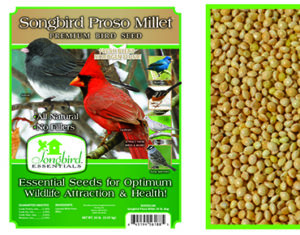
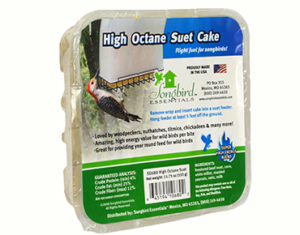
Journaling your bird-sightings is worthwhile in winter as well as summer since you can see many species out your own window. Learning the differences in plumage and species in summer and winter is always a pleasurable experience. I see something new every season. Our Missouri winter birds are magnificent. Look outside, look up for the big birds, and enjoy!
Wintering Birds of Missouri
By: Kaylee Paffrath
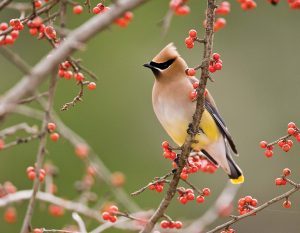
We see the great migration of birds, insects, and other animals in and out of Missouri each year. What drives these animals to migrate? The natural need to feed and breed of course. Migration is nature’s way for a bird to take advantage of new dining or nesting opportunities. Birds are traveling from areas of low resources to areas of higher resources that better align with their needs at the time. In North America approximately 350 species make the great migration to nonbreeding grounds in winter and back to breeding grounds in the spring.
Missouri can often be a tricky place to see some common migrators due to the infrequent weather conditions. Early or late winters greatly affect the bird’s internal “trigger” to migrate. Some northern migrators such as grosbeaks, pine siskins, crossbills, redpolls, goshawks, prairie falcons, snowy owls, and northern shrikes don’t always make the migration south to Missouri.
Not all birds migrate of course, and you might see some frequent visitors at your feeder this winter with over 143 different species hanging around each year. Even a beginning birder can make some easy identifications in winter with the proper set up. Feeding Missouri’s birds in winter will provide opportunities to see rare birds as well as assist in providing the essential dietary elements these birds chose to hang around for. Consider keeping a field guide handy for quick identification – we’ve got plenty at Songbird Station.
What birds can you expect to see at your feeders this winter? You will almost always see common birds such as the American robin and mourning doves but you will also see woodpeckers of all sorts including red-headed, red bellied, downy, and pileated, belted king-fisher, yellowbellied sapsucker, cedar waxwings, blue jays, horned larks, mockingbirds, dark-eyed juncos, brown-headed cowbirds, house finches, American goldfinches, house sparrows, and more totaling over 48 species!
Attracting Missouri’s songbirds to your backyard can be easy. A clean, ice-free, water source makes a huge impact on what birds you will see at your doorstep. A de-icer or heated birdbath is a must have, especially in central Missouri plus a de-icer will help keep your ceramic or concrete birdbath from cracking. All birds require water for drinking and bathing. Consider purchasing a birdbath protector like the Songbird Essentials SE7030 Birdbath Protector which helps to naturally clean water without the use of toxic chemicals.
The second key element in seeing Missouri’s unique songbirds this winter is to provide the best possible nutrition. Quality foods high in fat like suet and nuts is essential. Food quality directly affects a wild bird’s ability to stay warm and survive. Check your feeder levels more frequently in winter. Using a feeder such as a Songbird Essentials Fly-Thru feeder allows you to easily see seed levels and refill. Never, ever give birds bread! Bread provides ZERO nutrition for birds as they are full of empty calories. Birds can freeze to death overnight on a “full belly” of breadcrumbs.
Winter offers many relaxing moments watching the birds go about their daily feeding routines from the comfort of your home. Winter is also a prime time to prepare your Spring housing. Yes, you can already start dreaming of Spring and what Missouri birds you may see in your backyard in April or May. Established houses not only improve your chances of attracting desired birds such as bluebirds, wrens, and chickadees in the Spring, but they also provide shelter for those Missouri birds that do stick around and survive the cold Missouri winters.
Watching backyard birds in Missouri is a fun winter pastime. Let our staff help you create a winter birding wonderland in your backyard to see some of Missouri’s feathered wonders this holiday season.
Flight of the Hummingbirds
By: Tristan Palmgren
Though it seems to us like the weather has only gotten a little cooler, our hummingbirds sense a big change coming. They know that migration season is on us, and they’ve started to prepare. Some of them are already on the move. You may have already noticed changes in your yards as some of the hummers you’ve been feeding all summer have left, and that you have some new arrivals that have migrated from farther north.
Hummingbird migration is one of nature’s most fascinating phenomena. When hummingbirds realize they’ll need to migrate soon, they start bulking up for the trip. They know instinctively that they’ll be expending a large number of calories soon, and they increase their energy consumption to compensate. Hummingbird nectar is typically made at a concentration of four parts water to one part sugar (and this is as true for Songbird Essentials nectar mixes as homemade nectar). During the migration season, we recommend increasing that concentration to three parts water to one part sugar.
 Songbird Essentials Super Shaker Nectar Maker
Songbird Essentials Super Shaker Nectar Maker
They need all that energy for a reason. Though some ruby-throated hummingbirds spend their winters in the very southern tip of Florida, the majority of those we see here in Missouri will cross the Gulf of Mexico to winter in Central and Southern America. Their journey will take them hundreds and hundreds of miles over the ocean in just twenty hours. And they’ll do it all in one trip, as there are few to no islands for them to stop on. They’ll traverse all this distance on wings that are just about an inch and half long, and that they need to beat forty to eighty times per second to stay aloft. It’s no wonder they eat more before they go.
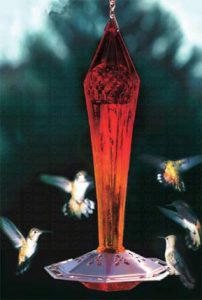 Songbird Essentials Faceted Ruby Hummingbird Feeder
Songbird Essentials Faceted Ruby Hummingbird Feeder
Hummingbirds increase their body weight enormously before migrating, nearly doubling their pre-migration weight. They then expend nearly all of that crossing the ocean. It’s one of the most arduous journeys any migratory species undertakes, let alone a species as small and vulnerable as the hummingbird. Imagine the toll on your body if, every year, you were to drastically increase your body weight and then expended of it in one concentrated burst of exercise. Hummingbirds are more adapted to these sudden gains and losses than our bodies would be, but it is still quite taxing on them.
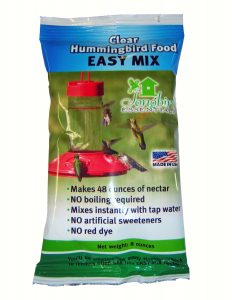 Songbird Essentials 8 oz Clear Hummingbird Nectar
Songbird Essentials 8 oz Clear Hummingbird Nectar
Hummingbirds have been migrating in this style for millions of years. Their lifestyle well predates human civilization. If only for our mental well-being, it’s important to remember that hummingbirds are not dependent on humans to survive. Our goal in feeding these birds is not to replace or micromanage an ecosystem, but to supplement it, and to encourage desirable and colorful visitors to come to our backyards. However, their migration does mean that the hummingbird’s dietary needs change, and those of us who provide food for them need to be aware of that fact. The same hummingbirds that frequented your feeders in spring will be looking for something different, and stronger, at the end of the season.
 Dr. JB’s Complete Switchables Available in 16 oz., 32 oz., 48 oz., & 80 oz. capacities
Dr. JB’s Complete Switchables Available in 16 oz., 32 oz., 48 oz., & 80 oz. capacities
The fact that hummingbirds not only survive this trip but have thrived as a species is one of the many traits that make them wonders of nature. Another trait is their fantastic memory and sense of geolocation. Not only do they migrate incredible distances, they can pinpoint specific locations, and return to the same backyards that they left months and months—and thousands of miles—ago. If you’ve been feeding hummingbirds regularly throughout this season, you can place a good bet that you’ll see those same birds next spring.
